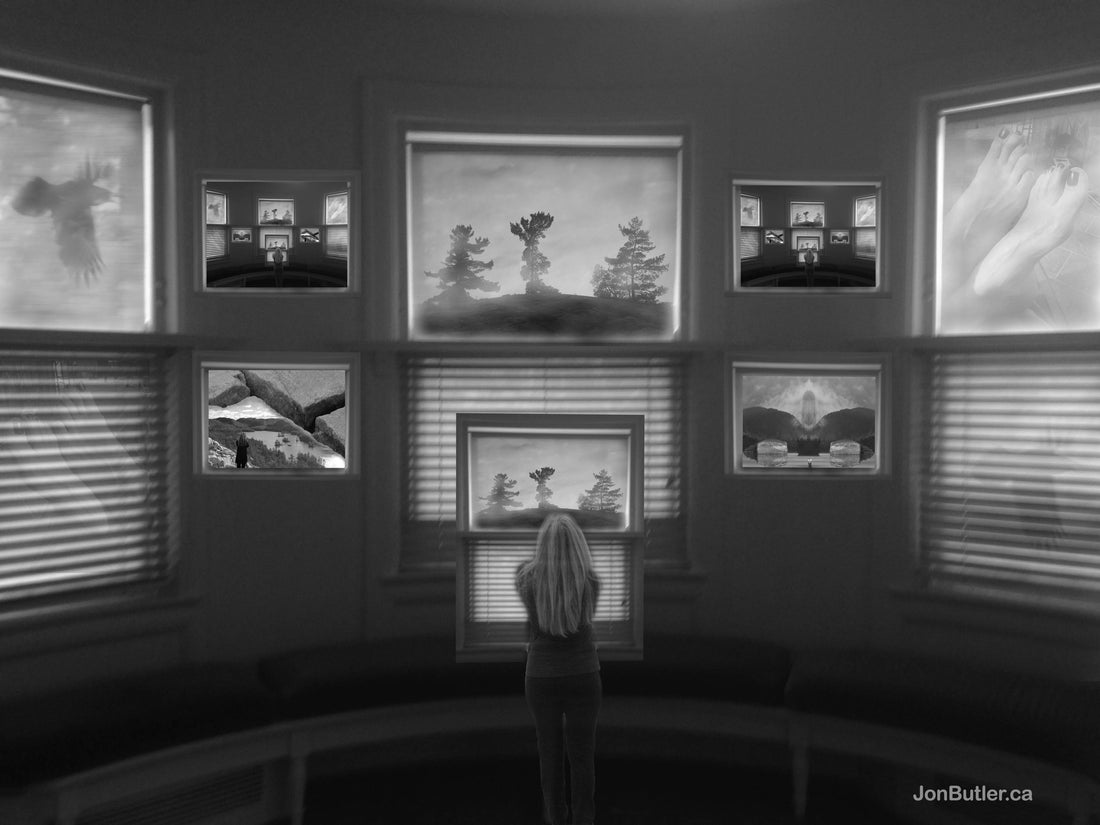A muse is often described as a source of inspiration for artists and creative individuals. The term “muse” originates from Greek mythology, where muses were goddesses who presided over various artistic and scientific disciplines. There were nine muses, each associated with a different form of art, such as poetry, music, dance, and history.

'Kerry At Grace' a photomontage by Jon Butler.
In a broader sense, a muse can refer to any person, idea, or object that ignites creativity in someone. This could be a person who inspires feelings of love or longing, a historical figure, a fictional character, or even a concept or philosophy. The muse serves as a catalyst for the artist’s thoughts and emotions, helping them translate their creativity into their chosen form of expression.
The relationship between the artist and their muse can vary greatly. Some artists have had muses who were their lovers or partners, while others have found inspiration in distant or unattainable figures. Some artists find their muse in nature, landscapes, or everyday life, while others are inspired by emotions, memories, or dreams.
The relationship between the artist and their muse can vary greatly. Some artists have had muses who were their lovers or partners, while others have found inspiration in distant or unattainable figures. Some artists find their muse in nature, landscapes, or everyday life, while others are inspired by emotions, memories, or dreams.

'Diving' a photomontage by Jon Butler.
Artists often rely on their muse to overcome creative blocks, find new ideas, or immerse themselves in their work. The muse provides a spark that drives the creative process and allows artists to produce remarkable works of art. It’s worth noting that the concept of a muse can be highly personal and subjective, with each artist finding inspiration in their unique way.
Throughout history, many famous artists have had well-known muses. For example, Pablo Picasso had several muses, including his many lovers, as did Salvador Dali, whose wife Gala Dalí inspired much of his surrealist work. Frida Kahlo drew on her personal experiences and physical and emotional pain as a muse for her powerful self-portraits.

'I looked up from under the water and saw my reflection on the island!' a photomontage by Jon Butler.
In literature, the idea of a muse has also been prevalent. The poet Samuel Taylor Coleridge wrote about the “Person from Porlock,” who interrupted his creative flow and prevented him from completing his poem “Kubla Khan.” This interruption by an external force is often seen as a cautionary tale for artists, reminding them of the importance of protecting and nurturing their creative process.
Overall, a muse embodies the essence of inspiration and plays a significant role in the creative journey of artists and creatives.

'The Gallery IV' a photomontage by Jon Butler.

